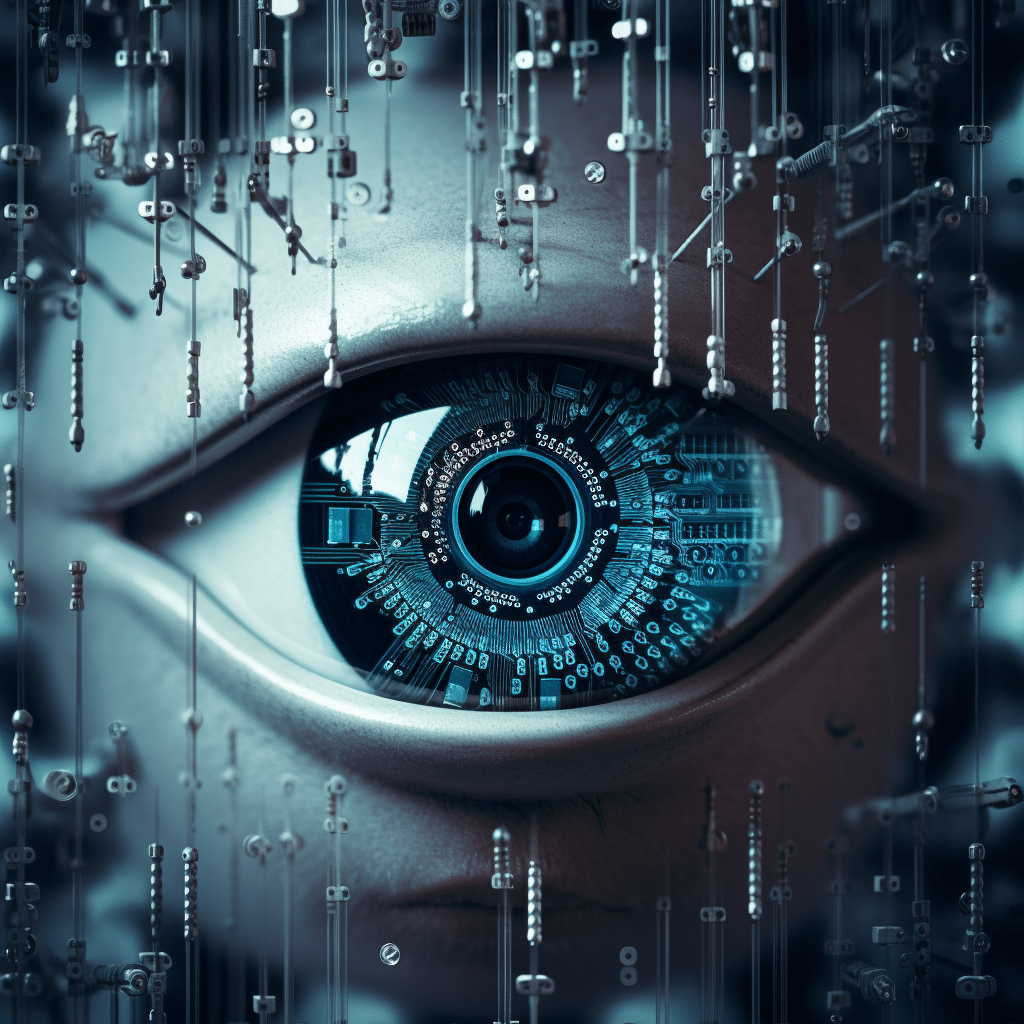
The Rise of AI Surveillance
Enhanced Security, Privacy Concerns

The proliferation of AI surveillance brings numerous benefits, primarily improved security. AI algorithms can quickly analyze vast amounts of data, identify anomalies, and help authorities respond more effectively to potential threats. Predictive analytics can flag suspicious patterns, notifying security personnel in real-time. For instance, facial recognition technology can identify individuals on watchlists, aiding law enforcement to locate criminals efficiently.
However, these advancements raise concerns regarding privacy and potential abuse of power. With surveillance systems becoming more sophisticated, there is a risk of encroaching on individuals’ privacy. Continuous monitoring and tracking can erode personal freedoms if not adequately balanced with regulations and transparency. Striking the right balance between security measures and safeguarding citizens’ privacy rights is crucial in navigating this evolving landscape.
Ethical Considerations
Ethical considerations surrounding AI surveillance are of paramount importance. Transparency in data collection and usage is essential to establish trust between governing bodies, businesses, and the public. Algorithm biases, potential misidentifications, and the risk of targeting specific demographics must be acknowledged and addressed proactively. There is a need for comprehensive legislation and strict regulation to ensure accountability and prevent the misuse of AI surveillance systems.
Impacts on Society
The integration of AI surveillance technology has far-reaching implications for society. On one hand, it can enhance public safety, deter crime, and assist in investigations. On the other hand, it raises concerns about mass surveillance, compromising individual privacy rights, and the potential for abuse by authoritarian regimes. Striking the right balance is a delicate task, requiring collaboration between policy-makers, the technology industry, and civil society.
Moreover, the widespread deployment of AI surveillance systems must consider potential biases and discrimination. Ensuring diversity and inclusivity in dataset creation and system development can minimize the risk of reinforcing societal prejudices. Transparency must be upheld, with open dialogues and critical evaluation of the technology’s implications on marginalized communities.
The Way Forward
AI monitoring technology is here to stay. It is always getting better and changing how people live. To make sure that it is used in a responsible way, lawmakers, technologists, ethicists, and people all need to work together. To find a balance between security needs and privacy issues, there must be clear rules, regulatory frameworks, and ways to keep an eye on things. Audits, accountability measures, and public awareness efforts that happen on a regular basis can build trust and reduce the risk of harm.
The ethical evaluation of AI surveillance systems must be a “ongoing” process that adapts to new problems and takes into account how society values change over time.We can use AI surveillance technology as a tool to protect society while keeping people’s freedoms safe if we think about the consequences, encourage conversation, and set appropriate limits.
How does the integration of AI and surveillance impact individuals’ privacy and civil liberties in society?
AI-enabled monitoring has a major influence on civil liberties and privacy. It can improve security and prevent crime. AI can evaluate massive volumes of data, identify threats, and help detect and respond to crime in real time. This makes people safer.
AI-powered surveillance systems can collect and analyze large amounts of personal data, raising privacy issues. These devices can track and analyze people’s movements, facial expressions, and conversations. These surveillance tactics raise concerns about privacy and data exploitation.
AI-enabled surveillance might normalize constant monitoring, producing a society with no privacy. Personal data misuse is a risk. False positives or misreading of activities by AI systems could lead to innocent people being targeted or ostracized.
AI surveillance systems are also opaque and unregulated, especially when run by businesses or governments without accountability. Individuals may not comprehend how their data is collected, stored, and used due to lack of openness. This raises questions regarding discrimination, manipulation, and data exploitation.
AI-surveillance integration poses civil liberties concerns including free speech and association. Fear of being watched may cause people to self-censor, stifling free speech and opposition. This can chill democracy and public conversation.
Strong AI surveillance ethical laws are needed to solve these issues. Transparency and accountability should ensure AI surveillance is justified, proportionate, and respects privacy rights. Balance security and privacy to protect civil freedoms.
In what ways can the use of AI in surveillance be regulated to ensure transparency, fairness, and accountability while still maintaining public safety and security.
There are several ways to regulate the use of AI in surveillance to ensure transparency, fairness, and accountability while maintaining public safety and security. Here are some potential measures:
1. Clear Legal Framework:
Establish robust laws and regulations that clearly define the permissible use of AI in surveillance. These rules should encompass the purposes for which AI surveillance can be employed, the types of data that can be collected, and the conditions under which it can be used.
2. Ethical Guidelines:
Develop and enforce ethical guidelines for the development and deployment of AI surveillance systems. These guidelines should include principles such as non-discrimination, fairness, privacy protection, and accountability. They should also outline the consequences for non-compliance.
3. Oversight and Accountability:
Create independent bodies responsible for overseeing the use of AI in surveillance. These bodies should have the authority to review and audit the use of AI systems, ensuring compliance with laws and ethical guidelines. They should also have the power to impose penalties for misuse or abuse.
4. Transparent Decision-Making:
Transparently explain AI surveillance system decisions. Interpretable algorithms help people understand decisions. Transparency ensures accountability and identifies and corrects biases and errors.
5. Public Engagement:
Involve the public in the decision-making process regarding the use of AI surveillance. Seek public input, hold consultations, and encourage debate to ensure that the use of AI systems aligns with public interests and concerns.
6. Strict Data Protection:
To protect data, take strict measures. Data retention duration s and allowed access should be explicitly established. To reduce re-identification risk, anonymize.
7. Regular Audits and Impact Assessments:
Conduct regular audits and impact assessments of AI surveillance systems to evaluate their effectiveness, potential biases, and societal impacts. These assessments can help identify areas of improvement and allow for necessary adjustments to be made.
By implementing these measures, governments and organizations can strike a balance between utilizing AI in surveillance for public safety while safeguarding transparency, fairness, and accountability.
How do AI surveillance systems’ ethical issues influence diverse demographics?

The use of AI in surveillance systems raises a number of moral issues, some of which may disproportionately harm certain demographics. Some major moral issues are:
1. Privacy Invasion:
AI surveillance systems can invade individuals’ privacy by continuously monitoring their activities, collecting large amounts of personal data, and potentially sharing or misusing that data. This concern affects all segments of the population as it compromises the basic right to privacy.
2. Bias and Discrimination:
AI systems are trained on historical data, which can perpetuate existing biases and discriminatory practices. For example, facial recognition systems may show higher error rates for certain ethnicities or genders, leading to unfair targeting or misidentification. These biases disproportionately affect marginalized populations, exacerbating social inequalities.
3. Lack of Accountability and Transparency:
AI algorithms used in surveillance systems are often complex and operate as “black boxes,” making it difficult to understand their decision-making process. This lack of transparency hinders people’s ability to contest or challenge decisions made by these systems, impacting trust and accountability.
4. Mass Surveillance and Social Control:
Widespread use of AI in surveillance systems can lead to a culture of mass surveillance, where individuals may feel constantly observed and become subject to social control. This can have a chilling effect on freedom of expression, dissent, and other civil liberties, particularly affecting activists, marginalized communities, and political dissidents.
5. Consent and Informed Decision-making:
Individuals may not be fully aware of the extent and capabilities of AI surveillance systems. Lack of informed consent undermines individual autonomy and the ability to make informed decisions about one’s privacy. This concern affects everyone, particularly when it comes to the deployment of AI surveillance technologies in public spaces.
6. Securing Confidential Data:
If improperly safeguarded, AI surveillance systems can breach, hack, or access large amounts of personal data. Identity theft, fraud, and other criminal behaviors can occur from such breaches, affecting users’ well-being and trust in these systems.
The ethical issues surrounding AI in surveillance systems usually affect vulnerable communities and law enforcement targets. Ethical AI monitoring requires significant protections to preserve people’s rights and well-being.









Can you be more specific about the content of your article? After reading it, I still have some doubts. Hope you can help me.
I don’t think the title of your article matches the content lol. Just kidding, mainly because I had some doubts after reading the article.